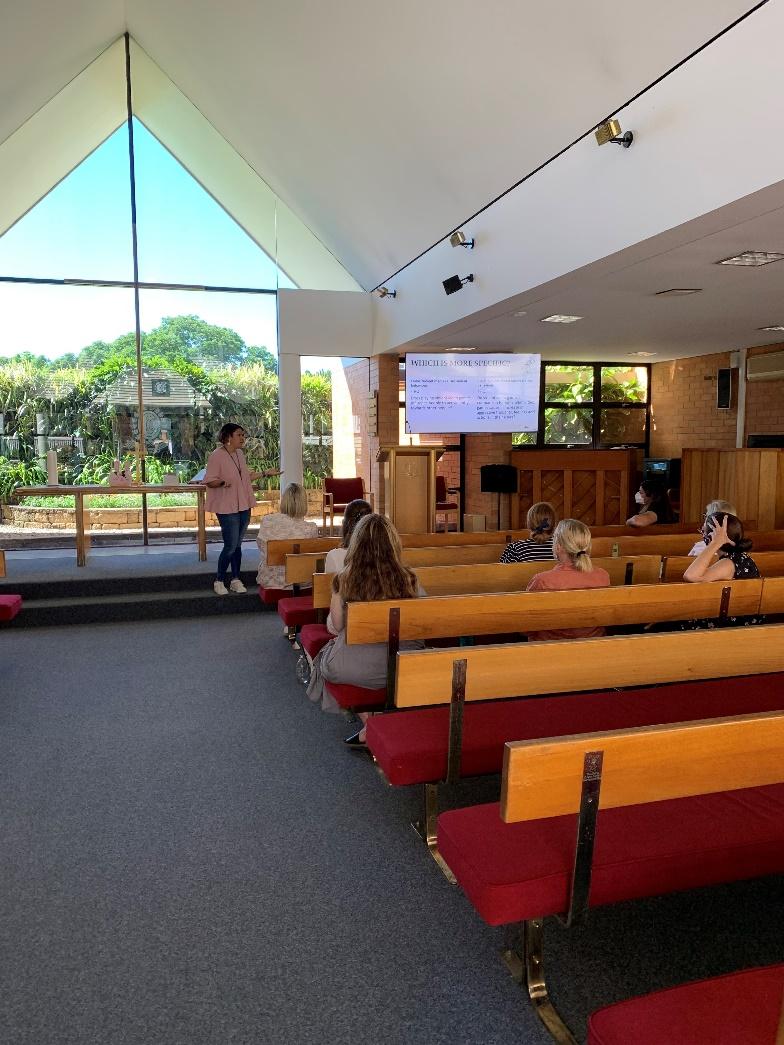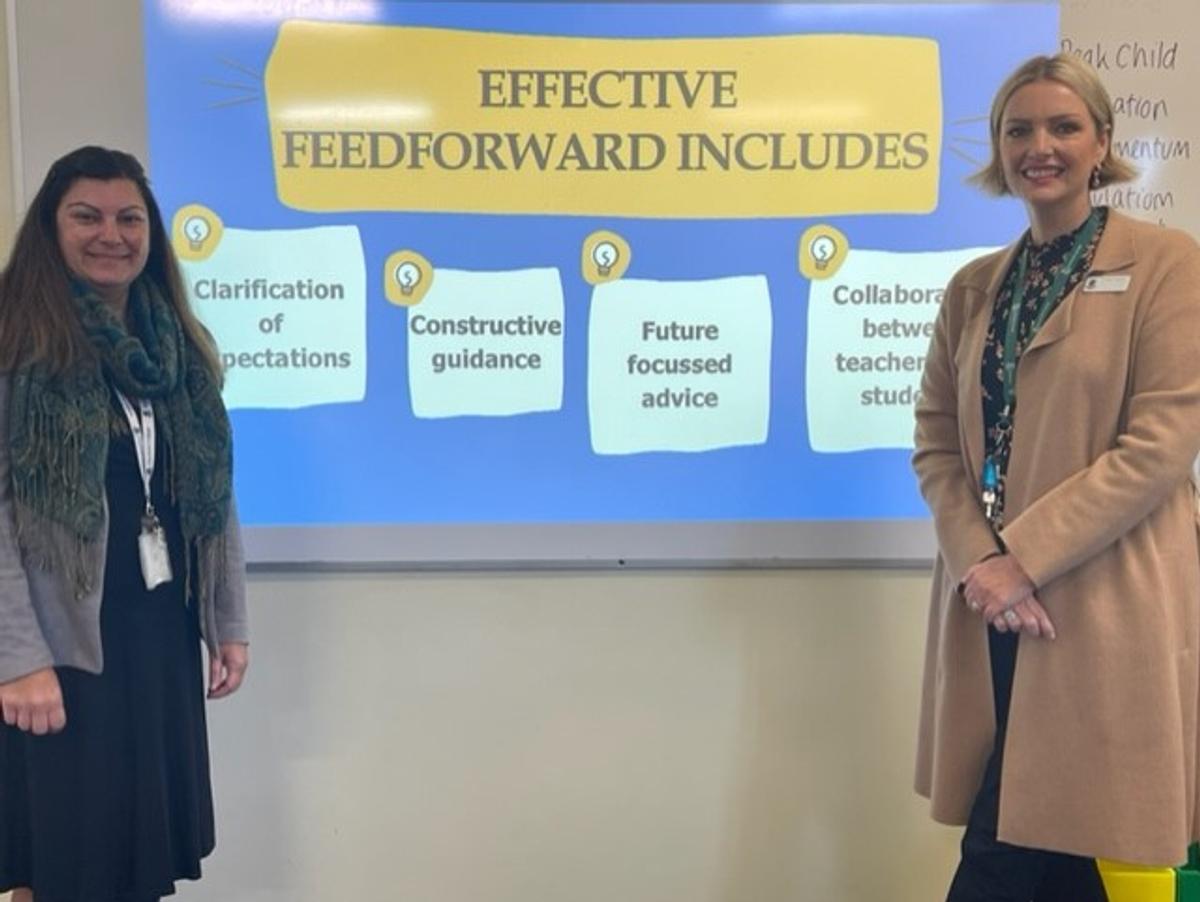Feedback to Feedforward through Formative Assessment
Mrs. Lakshmi Mohan - Deputy Principal
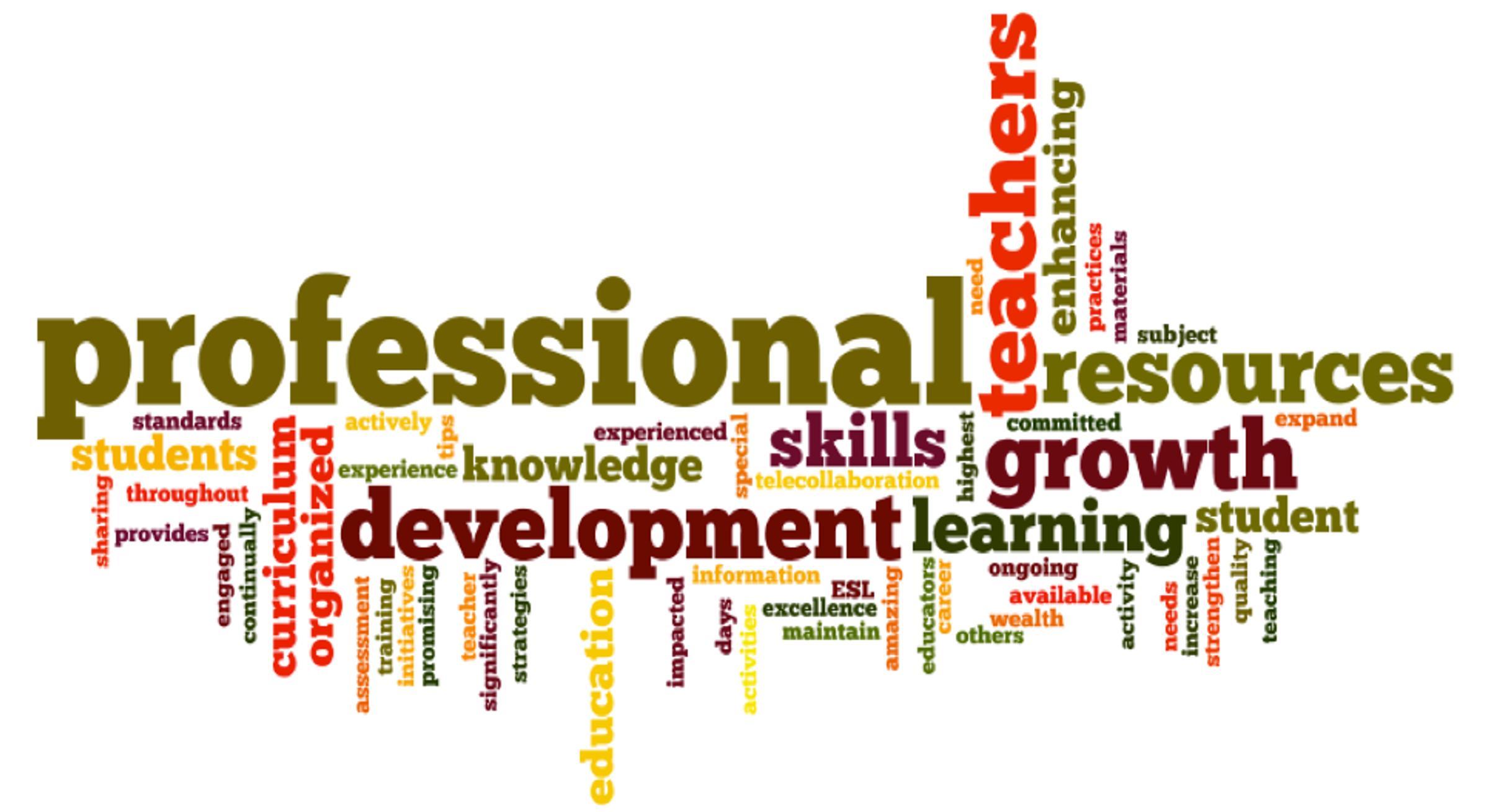
Feedback to Feedforward through Formative Assessment
Mrs. Lakshmi Mohan - Deputy Principal
As part of Clayfield College’s continuing focus on staff professional development and learning, teachers across the Primary and Secondary schools participated in a series of workshops exploring the areas of feedback, feedforward, and formative assessment. These workshops were facilitated by our Heads of Department and Specialist teachers.
Our workshop presenters share a synopsis of their research and findings below:
Team Feedback identified that the purpose of feedback is to ascertain where the learner is going on their learning journey (feed up), where they are right now (feedback), and where they are heading to next (feed forward). This thinking around feedback follows two evidence-based models by Hattie and Timperley (2007) and Black and William (2009).
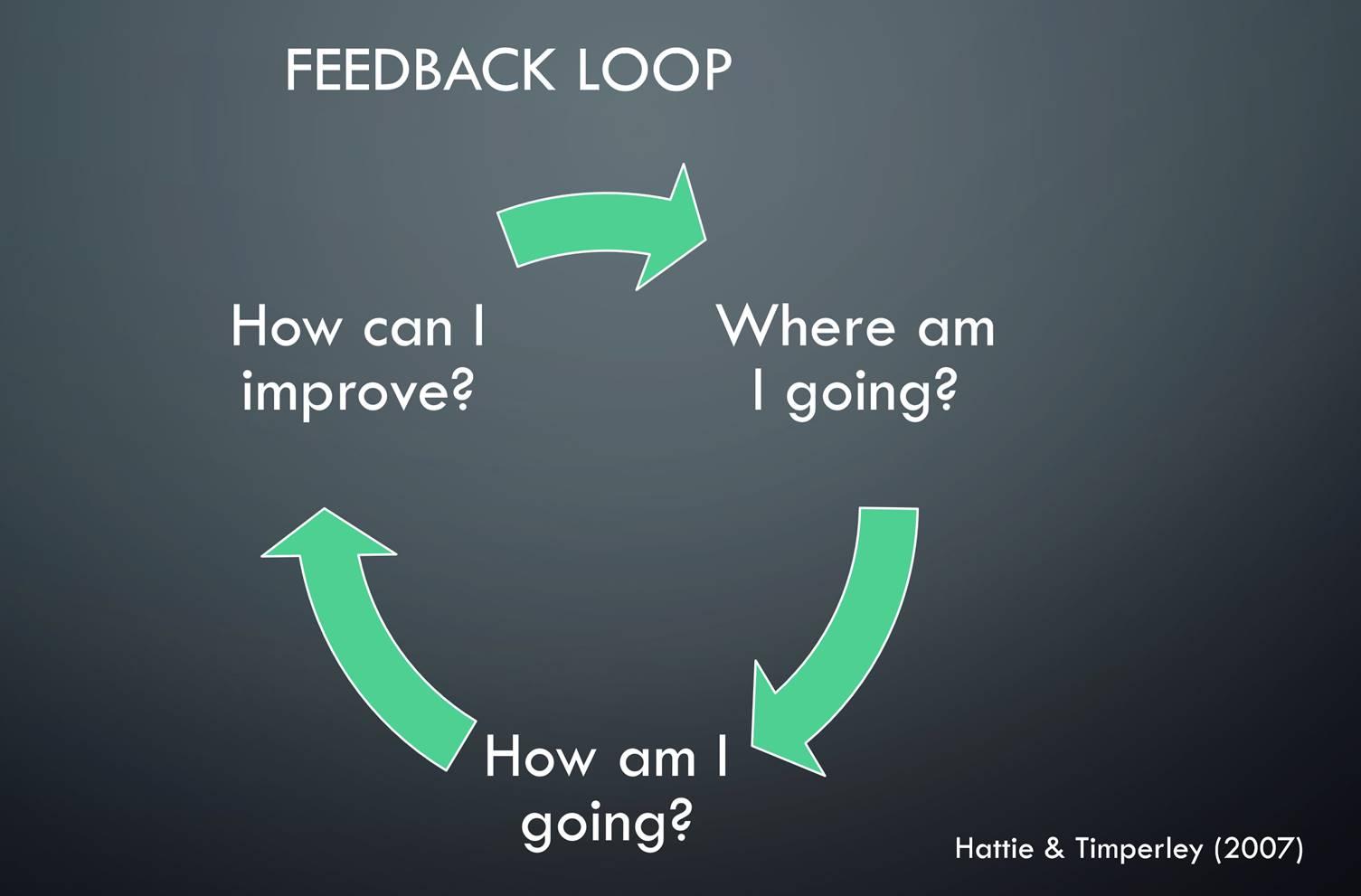

Feedback is vital for students and teachers, as it provides information about the learner’s performance, relative to the learning goals. It is based on evidence of learning, and it leads to changes in the student and/or teacher’s behaviour. Having evidence of student understanding and progress is required to determine the next steps in learning and will assist teachers in evaluating the impact of their teaching and learning activities.
The nature of the assessment activity and the context of the learning influences the type of feedback provided to students. Feedback can take many forms, including digital and written. It may be formal or informal but should encourage dialogue between the teacher and student about learning.
Effective feedback is goal-referenced, specific, corrective, constructive and timely, and focuses on effort, task, process or self-regulation of the student. Providing effective feedback will increase student effort and autonomy.
Participants in the workshop shared thoughts on what features effective feedback contained and enjoyed the opportunity to hear from colleagues in different areas of the school with different specialities. We also looked at Feedback checklists and strategies to improve quality feedback.
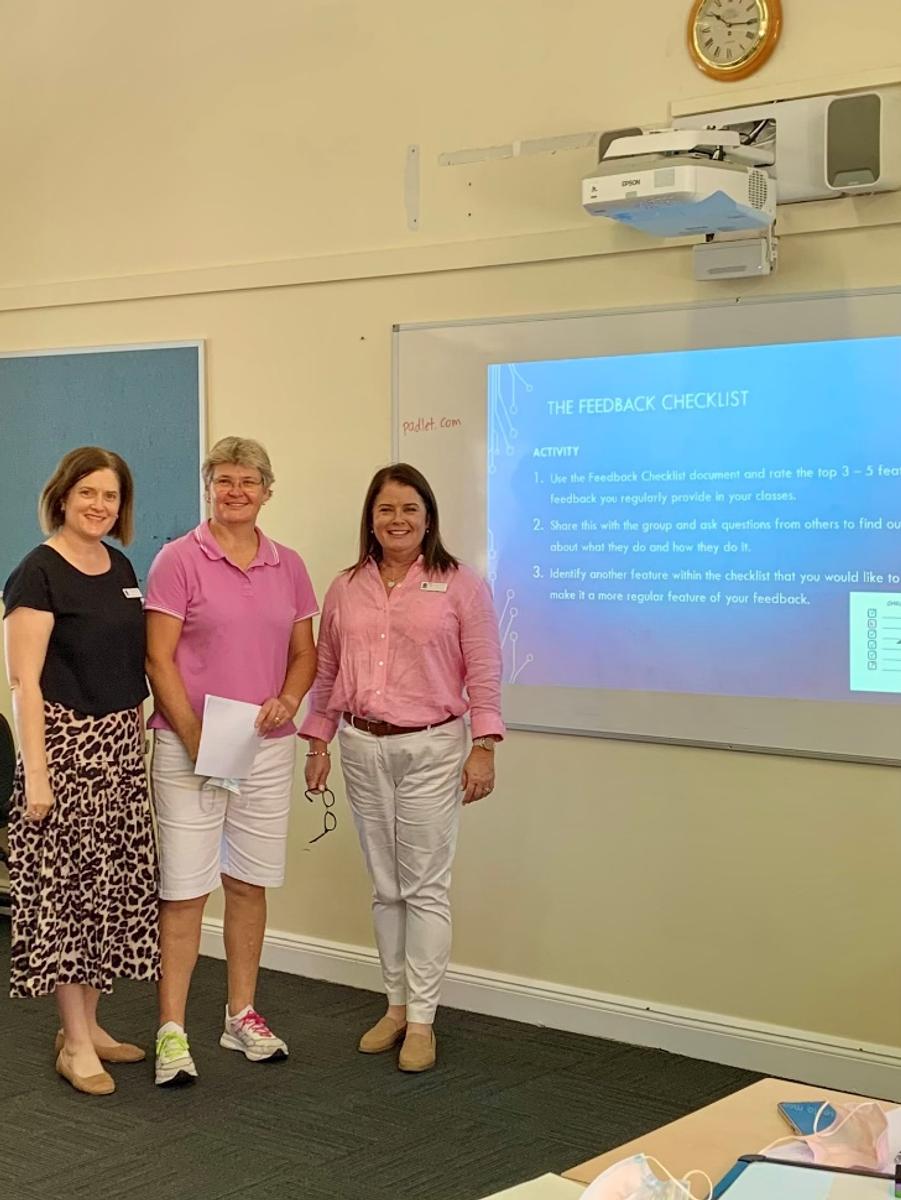
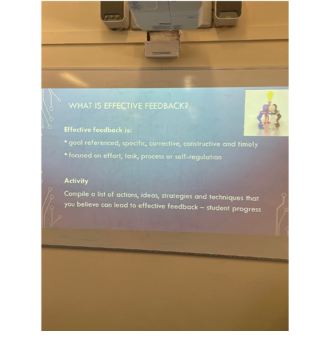
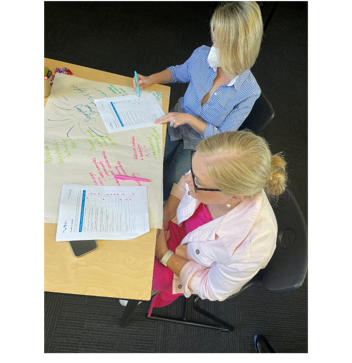



Formative assessment is an evidence-based teaching strategy which is proven to engage students in their learning and provide both teachers and learners with information which helps them to understand where the learner is, how the learner is going and what they need to do to progress in their learning. It is a process which involves clarifying, sharing, and understanding learning intentions, engaging in discussions and activities which elicit evidence of learning and providing feedback that moves learners forward. Formative assessment is then, closely tied to feedback and feedforward. William and Leahy (2015) make the point that formative assessment occurs where teachers collect evidence of student learning, and this evidence is used by teachers, learners or peers to make decisions about next steps in learning that are better than decisions made in the absence of such evidence.
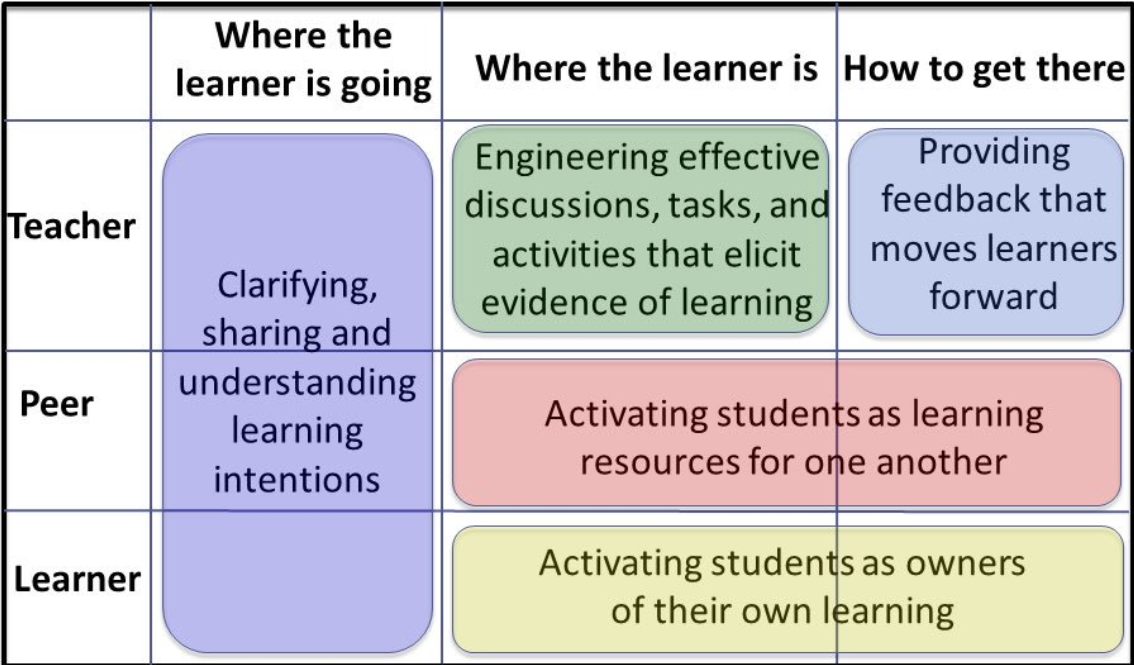

Effective formative assessment practices involve teachers providing clear learning intentions which outline what students should know and be able to do by the end of the lesson and success criteria which describe how they can demonstrate success. Questions and quizzes are also methods used by teachers and learners to identify what students know and can do and what they still need to know, to be successful. Formative assessment takes place at regular intervals throughout the unit of work. It involves teachers, learners and peers working together to identify where the learner is going, where the learner is right now and how to get there.
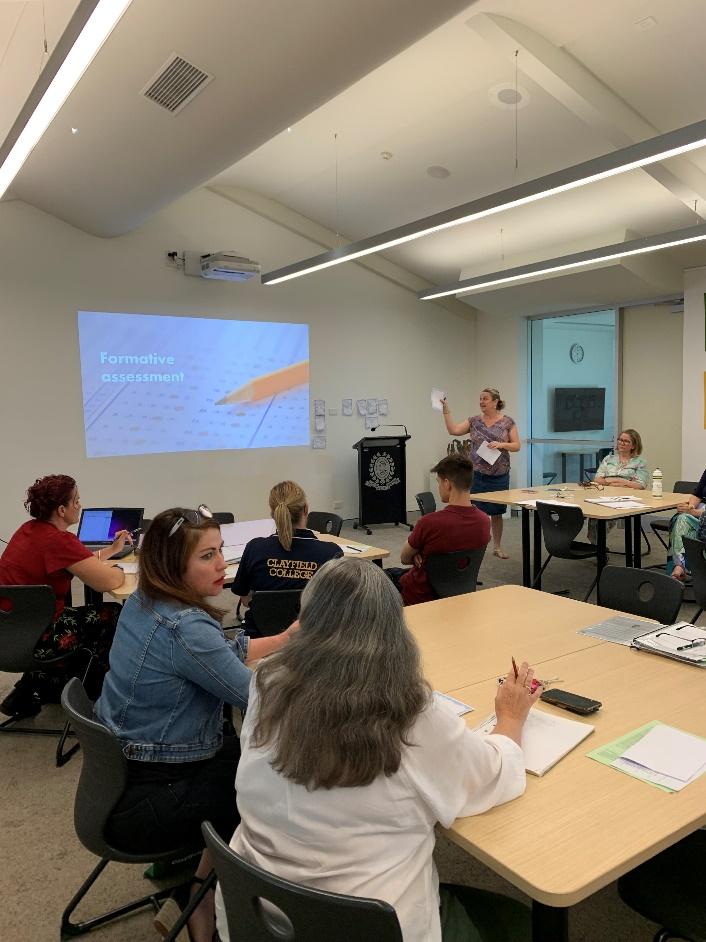
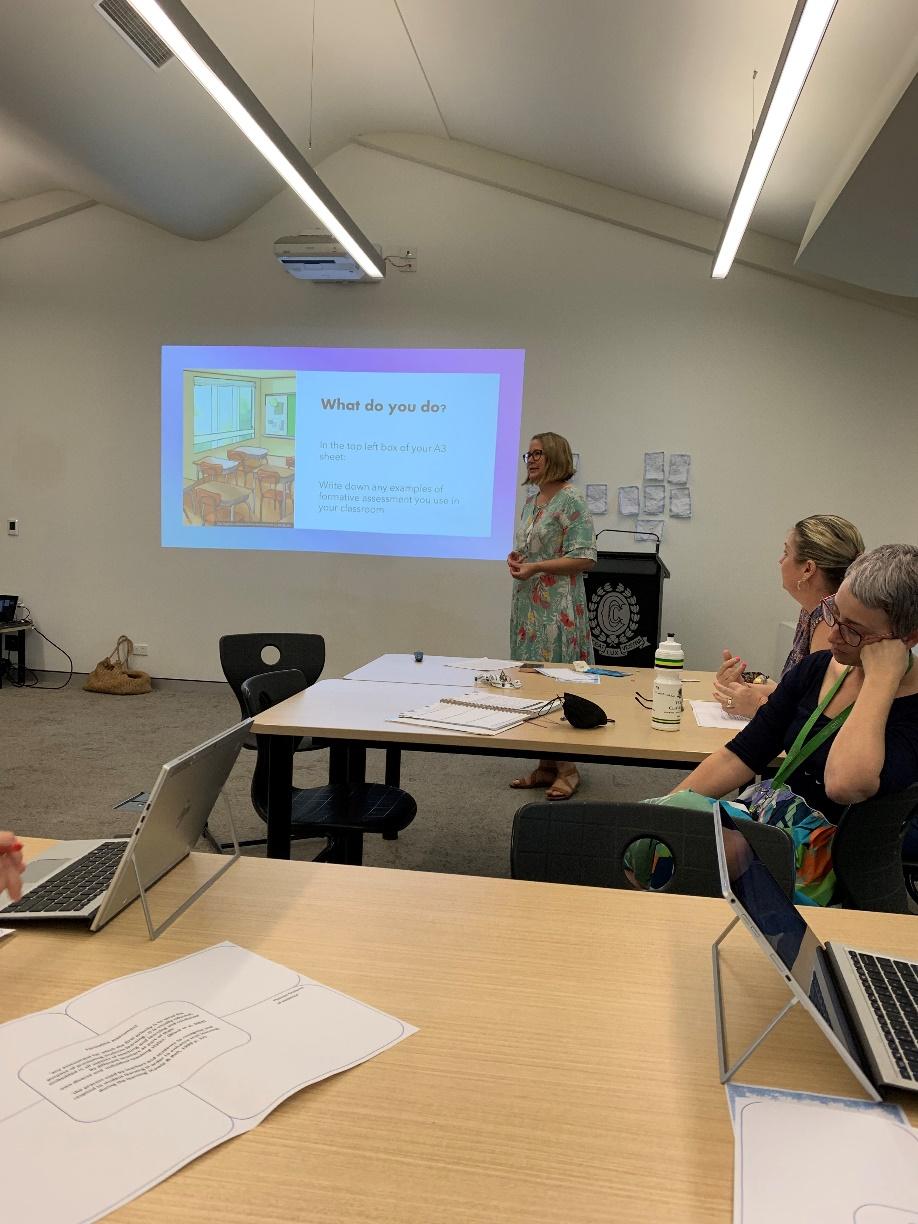
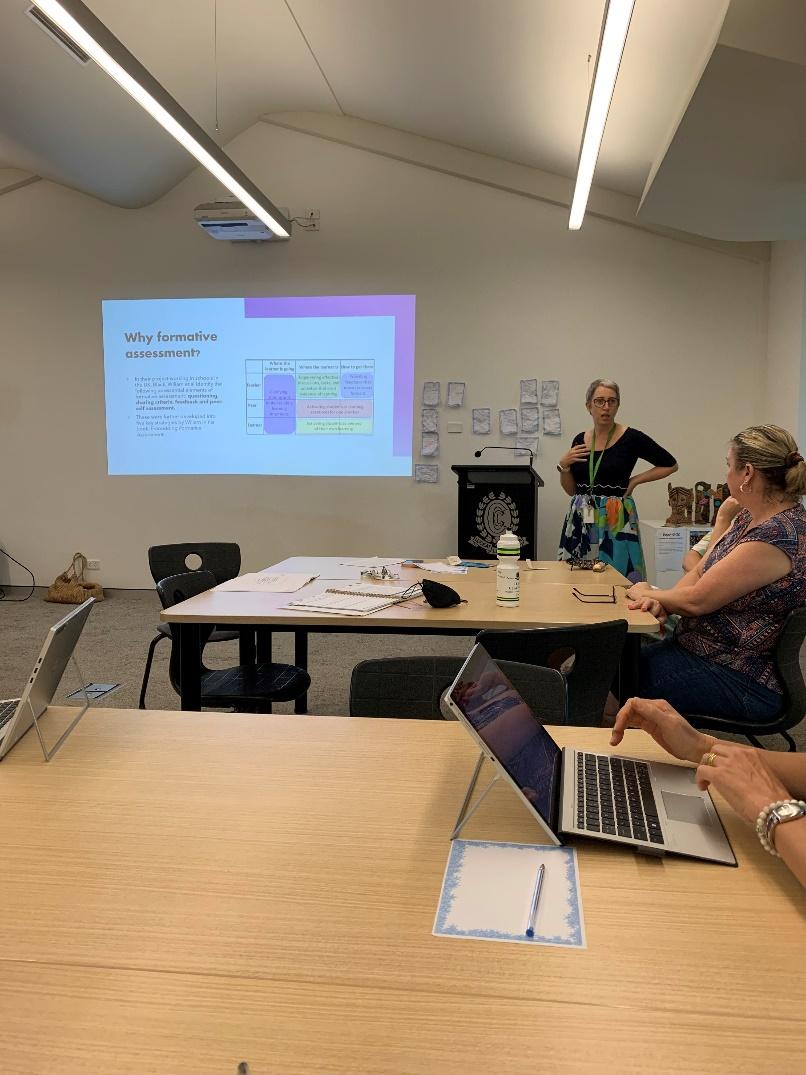



Current pedagogical research suggests effective feedback is a cycle that can be broken down into three significant parts - all important and valid:
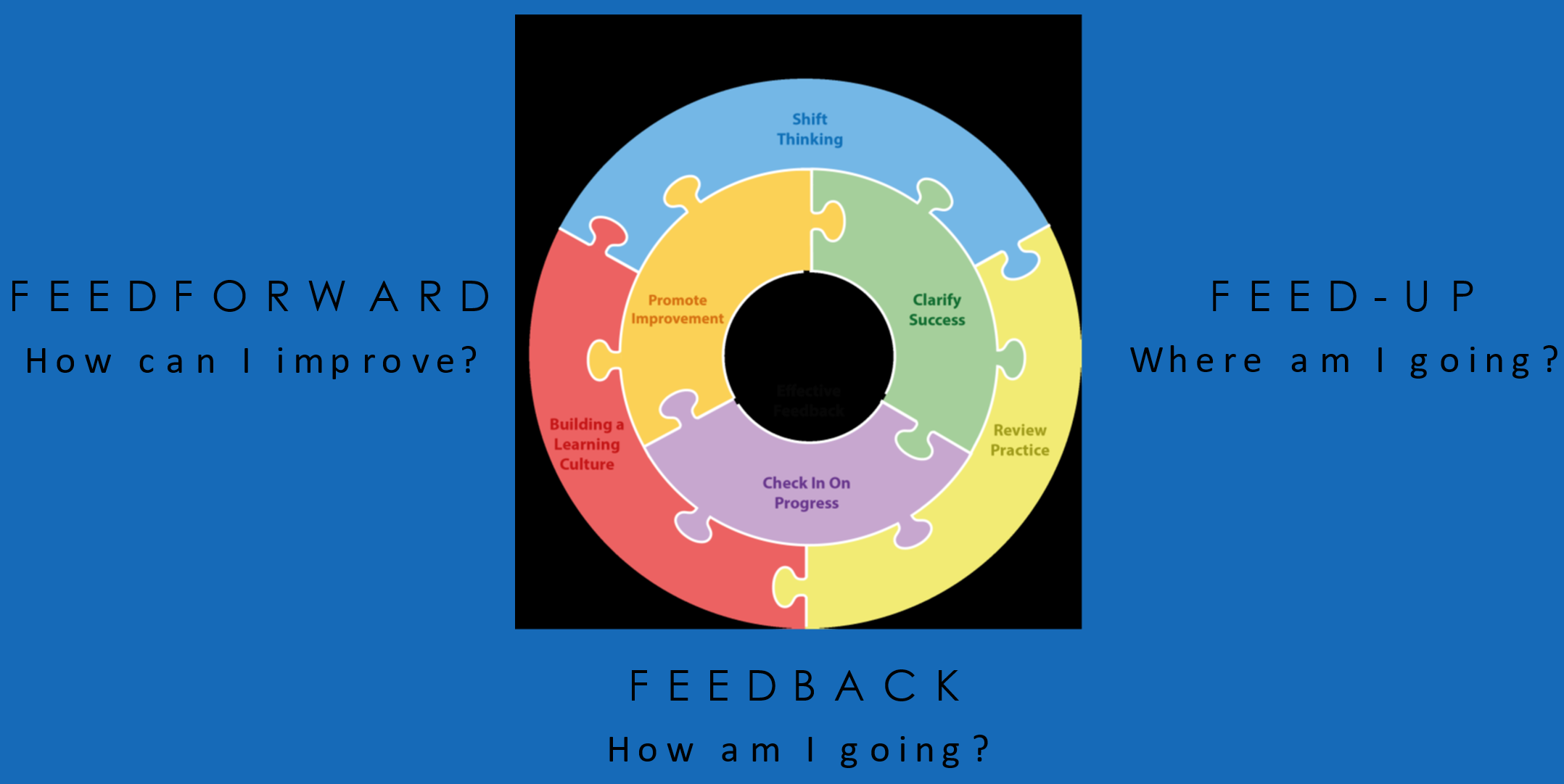

Our group focused on ‘Feedforward’, which at its core means to look ahead to subsequent assignments or tasks to offer constructive guidance on how to improve.
Findings suggested there is a ‘feedback gap’, an apparent disassociation between the efforts and guidance of teachers and the use of feedback by students. Further, students reported when they do engage with feedback, it is not useful to them as it looks back at work that has been done, rather than forward to how they can improve. Feedforward can help address this disassociation.
Essentially, feedforward is feedback to students which is timely, constructive and feeds into the next assignment/task. Our presentation suggested this means:
Our workshop provided a list of practical examples of how this may work in our classrooms, such as:
The bulk of our workshop time consisted of activities to show how some of the examples of creating feedforward could work in both Primary and Secondary classrooms. These activities were tested on teachers in the workshop:
Exemplar of examples and non-example feedforward task
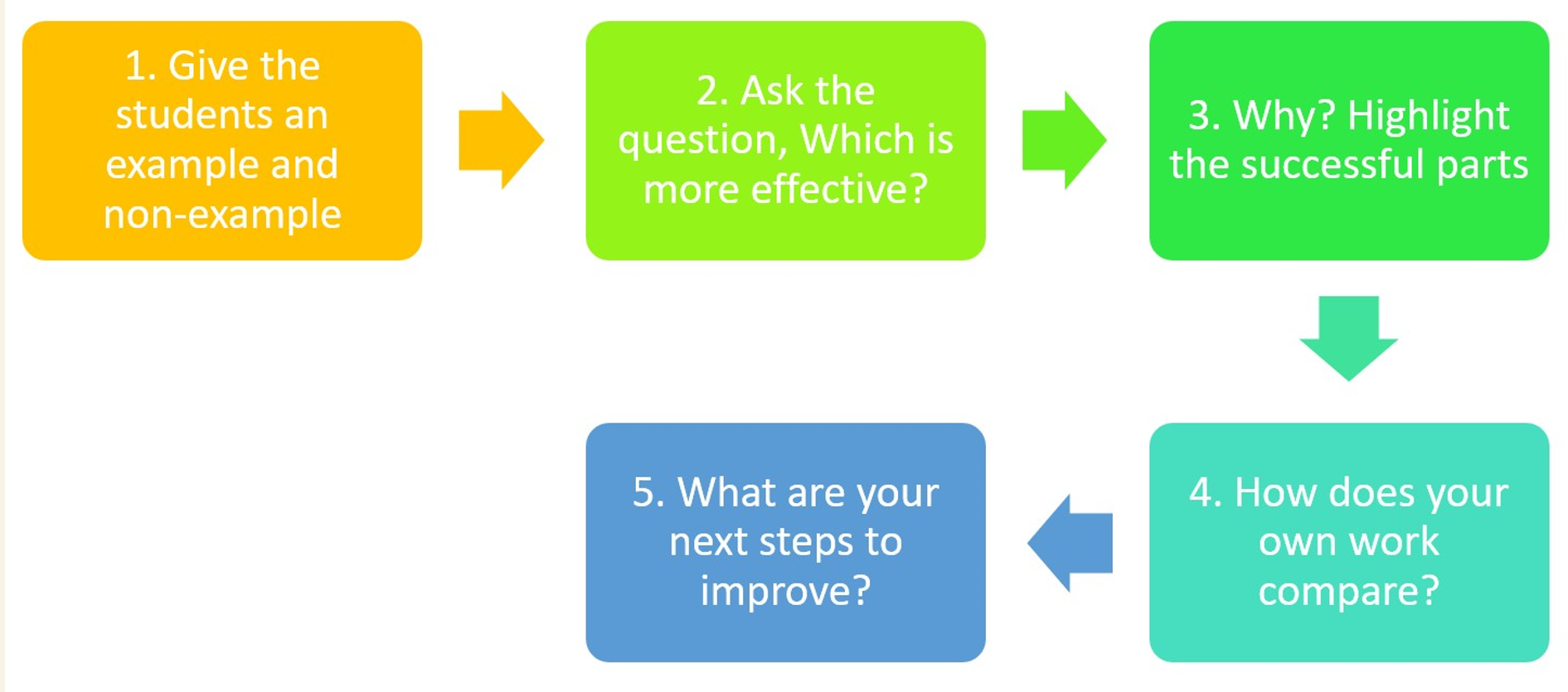

Primary students will receive feedforward across all subject areas on their digital folios throughout the year. Secondary students will receive feedforward as part of their progressive reporting comments. We also hope students will experience a range of feedforward activities in the classroom in the future.
